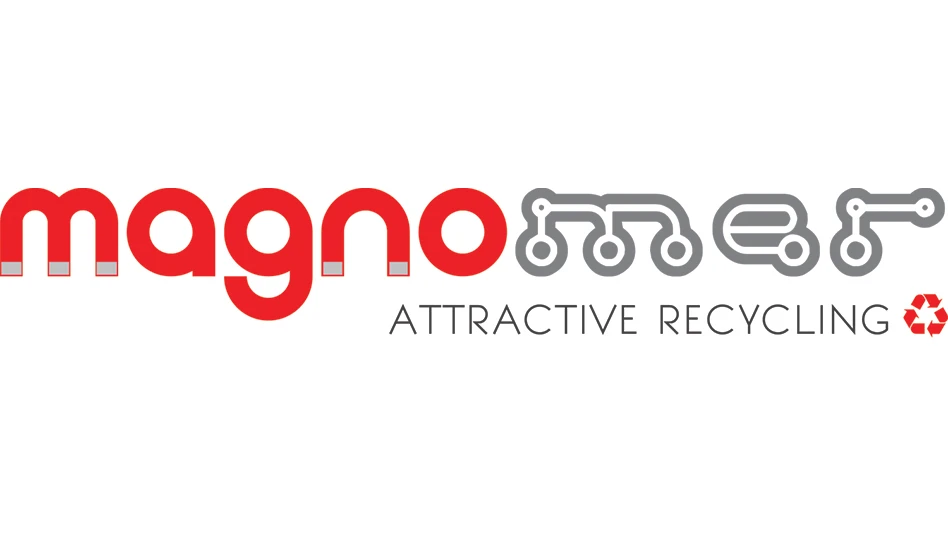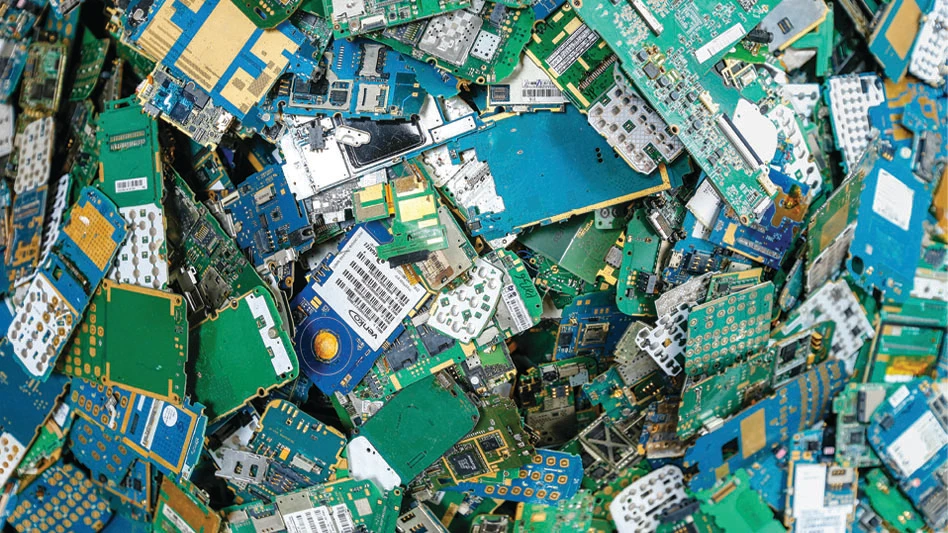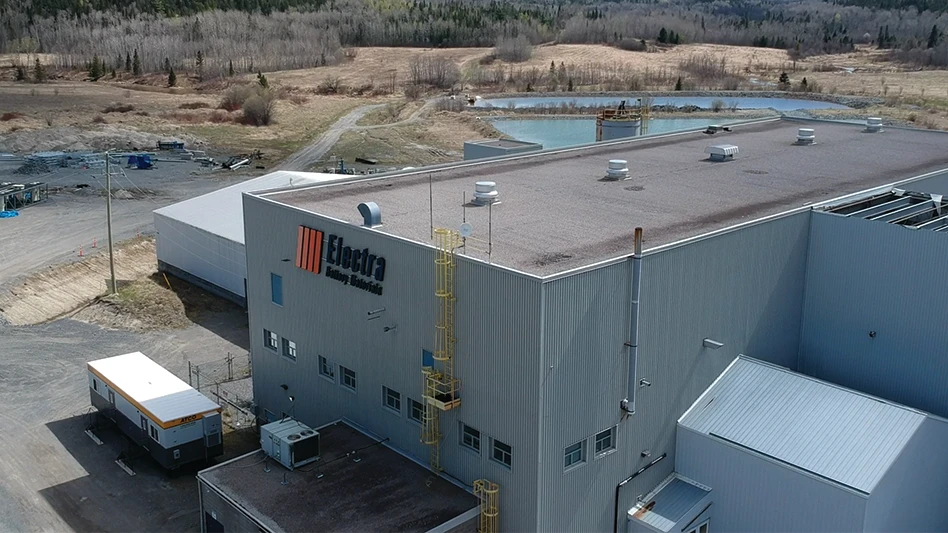
Global demand for stainless steel products has been growing steadily. Unfortunately for scrap dealers, however, that has not translated into surging global demand for stainless scrap.
Events far from home can affect demand and pricing in any North American scrap market, and that has proven as true in the stainless steel sector as in any other.
For North American stainless scrap processors and traders, abundant nickel ore production in Asia has created two problems: 1) less demand for stainless scrap from China’s booming stainless steel sector; and 2) lower global nickel pricing, which pinches scrap supply in North America.
Global discussion
At the 2017 Bureau of International Recycling (BIR) World Recycling Convention, held in late May in Hong Kong, delegates received an update on the lackluster market.
BIR Stainless Steel & Special Alloys Committee member Jonathan Bower, based in the United Kingdom with ELG Haniel Metals Ltd., said 2017 started with “positive developments” in the first quarter. These included stronger LME (London Metal Exchange) nickel pricing, which led to
The second quarter, however, saw nickel pig iron mining restrictions in Indonesia and then in the Philippines being lifted, causing what Bower called “a significant correction in the nickel price.” (See the Pricing History chart below for the difference between Dec. 2016 and June 2017 LME nickel pricing.) Unfortunately for scrap traders, more nickel pig iron available to Chinese stainless steel mills typically leads to less scrap demand from those same mills.
Markus Moll of Austria-based Steel & Metals Market Research (SMR)
SMR forecasts global stainless steel production to rise by some 3 million metric tons (or 4.8 percent) in 2017, followed by a 3.6 percent growth forecast for 2018. He said Indonesian stainless mill capacity is coming online, which will help the country consume some of its own nickel pig iron by the end of this decade.
Moll said conditions are in place that should lead to rising scrap usage ratios in melt shops in the United States and India starting in the second half of 2017, though China’s producers likely will still rely on abundant nickel pig iron.
Freelance journalist Adam Minter, who is based in Kuala Lumpur, Malaysia, said increased scrap generation in China and other parts of Asia is likely to lead to “multipolar scrap trade” patterns and less of the one-way flow from Europe and North America to Asia.
In his presentation, Moll indicated that the stainless scrap trade could be providing a leading indicator for this, as “only 8 percent of the market” in stainless scrap involves trade from one continent to another. “Stainless [steel] has increasingly become a regional business.”
Trade patterns

Joe Pickard, chief economist and director of commodities at the Institute of Scrap Recycling Industries (ISRI), Washington, provided details on stainless scrap trade flows during the Stainless/Nickel Spotlight at that association’s 2017 convention. ISRI2017 was April 22-27 in New Orleans.
Pickard said
In 2009, global trade of stainless steel dropped sharply. This corresponded with the sharp decline in nickel pricing, according to Pickard, as the metal reached the record low of $8,850 per metric ton that year. As prices recovered, global flow of stainless scrap improved. In 2015, the most recent year for which complete statistics are available, 5.1 million tons were traded globally. However, he added that 2015 was “not a great year on pricing or flow.”
In 2015, 110 different countries exported stainless scrap, Pickard said, with Germany exporting the most material at 1.1 million tons, followed by the Netherlands at 775,000 tons and the U.S. at 514,000 tons. These three countries tend to be in the top three in any given year, he added. Europe and North America account for most stainless steel exports, Pickard added, noting that material exported from European nations tends to stay within Europe.
In terms of stainless steel imports, at 913,000 metric tons, Belgium brought in the most stainless scrap in 2015, he said, with Germany, France, the Netherlands, Italy, Spain and the U.K. being the country’s top suppliers.

India, South Korea, Taiwan,
On the other hand, Pickard said, China imported only 6 percent of stainless steel scrap globally in 2015, despite producing 52 percent of the world’s stainless steel that year. China’s stainless steel largely is made with nickel pig iron it imports from the Philippines.
Despite its meager 6 percent stainless scrap import figure, China still is an important export destination for U.S. for stainless scrap, Pickard said, noting that it was the No. 2 importer after Canada.
He said stainless scrap exports from the U.S. were not off to a great start as of the first two months of 2017. Half the amount of this material was shipped through February 2017 than in the first two months of 2016. He said the decline was related to softer nickel pricing, adding, “As nickel prices go down, you see diminished flows of scrap.”
Difficult path
The static nickel pricing in the summer of 2017 is not a new story but rather a recurring theme in the stainless scrap sector. At the close of trading Friday, April 28, 2017, the value of nickel hit a 10-month low, according to a news report prepared by the Economic Calendar website, www.economiccalendar.com. The website cites the culprit as disappointing first quarter 2017 nickel import figures for China.
The late April situation for nickel was indicative of its struggles to experience a price rebound throughout much of this decade. For scrap
With or without imported stainless scrap, China has become the largest global producer of stainless steel. The ability of its mills to continue to absorb metallic units as feedstock will continue to affect the price of nickel throughout 2017 and beyond.
Although China has been importing nickel pig iron from Indonesia and the Philippines throughout this decade, each of those nations also has at times restricted its nickel ore mining activities, owing to either environmental reasons or in a bid to attract smelting and refining activity.
The Economic Calendar news item from late April notes that those in the stainless steel and nickel markets were watching to see if Regina Lopez, then the acting secretary of the Department of Environment and Natural Resources in the Philippines, would be confirmed as the full-fledged secretary. However, Reuters reported May 3, 2017, that Lopez’s confirmation was rejected, causing the LME price of nickel to drop that day.
According to media reports, Lopez was the one who “ordered the shuttering of 28 of the country’s 41 mining companies earlier in the year due to supposed violations of environmental regulations. She also ended 75 contracts to develop new mines.”
With or without imported stainless scrap, China has become the largest global producer of stainless steel. The ability of its mills to continue to absorb metallic units as feedstock will continue to affect the price of nickel throughout 2017 and beyond.
Not all of China’s stainless steelmaking activities are welcome, as indicated by a European Union trade case decided against China and Taiwan in January 2017.
In that case, the European Commission (EC) decided to impose definitive anti-dumping measures on two steel products originating in those two nations. The EC ruled that stainless steel tube and butt-welding pipe fittings had been sold in Europe at dumped prices.
Chinese exports of those two products subsequently have been taxed with anti-dumping duties ranging from 30.7 percent to 64.9 percent. Taiwanese exports are facing anti-dumping duties ranging from 5.1 percent to 12.1 percent.
Activity in China has affected the stainless scrap markets around the world, as reported by numerous recyclers who prepare reports for the Brussels-based BIR’s World Mirror publication on stainless steel and special alloys.
Writing in the World Mirror in May 2017, BIR Stainless Steel & Special Alloys Committee Chair Joost van Kleef of Netherlands-based Oryx Stainless B.V. remarks, “Production of stainless has been at high levels and, in following the normal business cycle, it will be lower during the summer months. All in all, the second half of 2017 is expected to be challenging for the recycling of stainless steel.”
Rick Dobkin of St. Louis-based Shapiro Metals and Barry Hunter of New Jersey-based Hunter Alloys LLC provide a North American perspective in the May World Mirror. The duo says the LME nickel market “has dropped around 20 percent [from] its high-water mark in mid-February [2017].” They add, however, that “U.S. stainless scrap markets remain aggressive.”
While LME nickel’s value may have dropped by 20 percent, the two traders say, “Prices being paid by the major stainless scrap processors [have] declined by less than 10 percent from their peaks.” Dobkin and Hunter add, “The highly competitive market would indicate either a tightness in the prompt availability of scrap or a need for good-quality nickel, chrome and iron units to enhance blends—or a combination of both.”
Domestic demand is helping North American processors get past a weak export market, the two traders also comment. “Export opportunities for stainless scrap remain limited to container shipments [and] seem to be bound primarily for India and other Asian markets, as European mills appear to be well-covered with sufficient scrap and are priced in line with their U.S. counterparts.”

Explore the August 2017 Issue
Check out more from this issue and find your next story to read.
Latest from Recycling Today
- Haber raises $44M to expand to North America
- Canada Plastics Pact releases 2023-24 Impact Report
- Reconomy brands receive platinum ratings from EcoVadis
- Sortera Technologies ‘owning and operating’ aluminum sorting solutions
- IDTechEx sees electric-powered construction equipment growth
- Global steel output recedes in November
- Fitch Ratings sees reasons for steel optimism in 2025
- P+PB adds new board members





